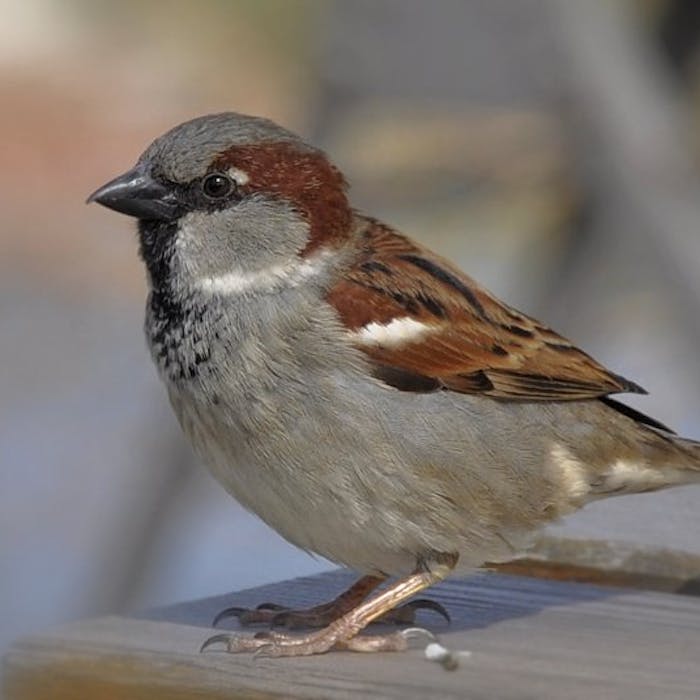
House sparrow - Mankind's feathered companion
The House Sparrow, noisy, cheerful, and dead common - until suddenly they weren't. Data suggests the UK's house sparrow population declined by 66% between 1977 and 2015, with urban populations faring worse than rural ones.
Almost everyone in Britain must be familiar with the appearance of this little brown bird, though it is sometimes confused with the more unobtrusive dunnock, or the similar tree sparrow.
Male birds have black bibs, and all sparrows have thick "finch-like" beaks, betraying their preference for seeds in much of their diet - though they are opportunistic eaters and also feed on insects and many other foods. The birds are very social, and very noisy - with chirps and cheeps rather than a song.
Sparrows feed and breed near to people. The species is vanishing from the centre of many cities, but is not uncommon in most towns and villages. It is absent from parts of the Scottish Highlands and is thinly distributed in most upland areas.
The decline in house sparrow numbers is not understood. The disappearance of the urban horse and improved hygiene measures around grain stores in the countryside have probably reduced an important food supply. Other possibilities suggested include loss of suitable nesting places with front garden hedges being replaced with car parking and an increase in the use of plastic instead wooden trims under house roofs. Some scientists point to unleaded petrol or lack of insects as the cause.
Since some other garden birds seem to be doing well, disease is another possibility for the decline of the sociable sparrow.
House sparrows typically raise two or three broods a year, sometimes four. Although nesting has been observed all year round, the main season is from April to August.
House sparrows nest in loose colonies - in dense bushes, hedges and creepers, as well as in nest boxes and crevices in buildings. Both parents incubate the eggs and raise the chicks.
The average lifespan is three years, with high mortality in the first year after fledging. The predators of sparrows include domestic cats, hawks, and many other predatory birds and mammals. However the oldest known wild house sparrow lived for nearly two decades! It was found dead 19 years and 9 months after it was ringed in Denmark. The oldest recorded captive house sparrow lived for 23 years.
Further reading
Links to external websites are not maintained by Bite Sized Britain. They are provided to give users access to additional information. Bite Sized Britain is not responsible for the content of these external websites.
